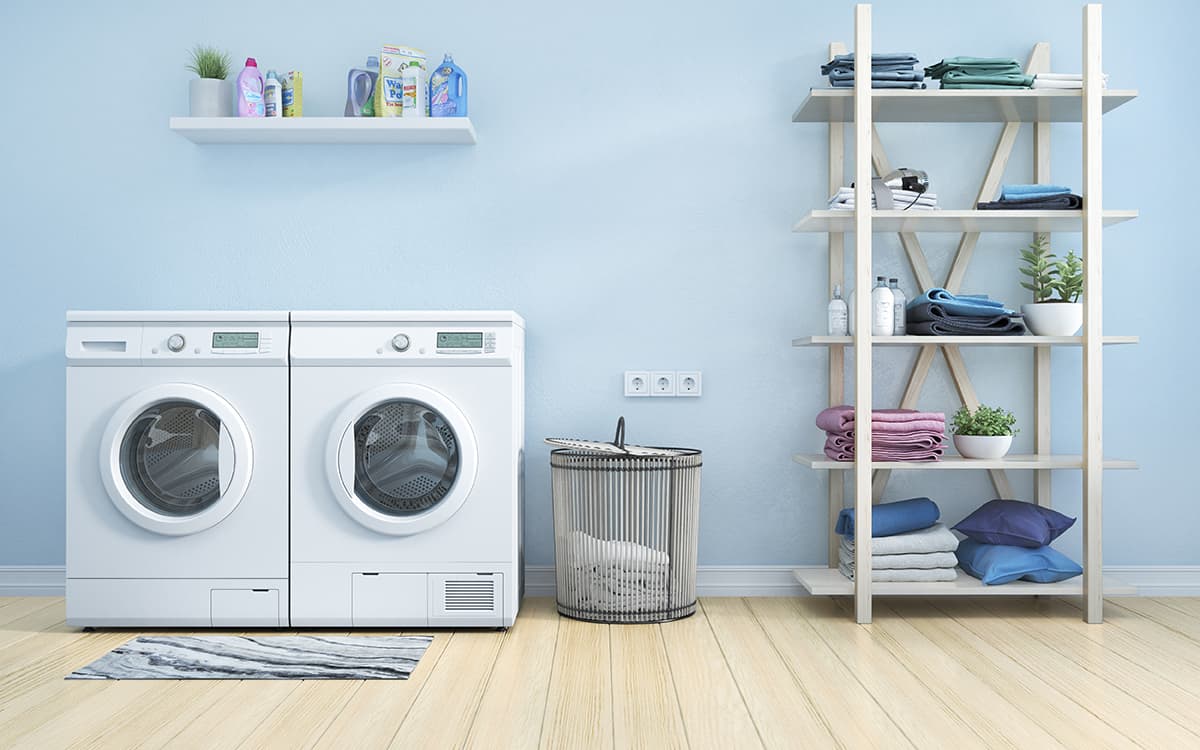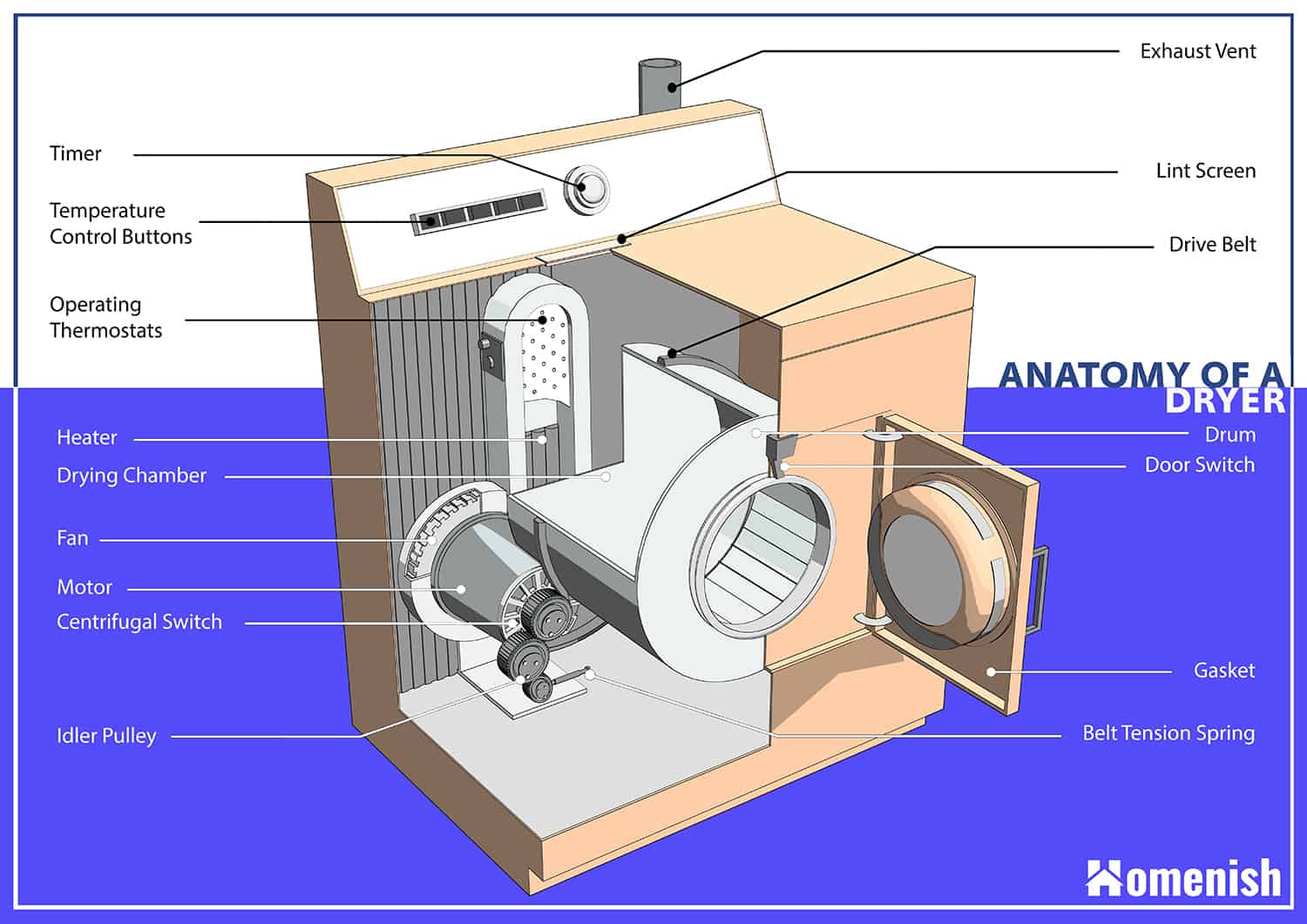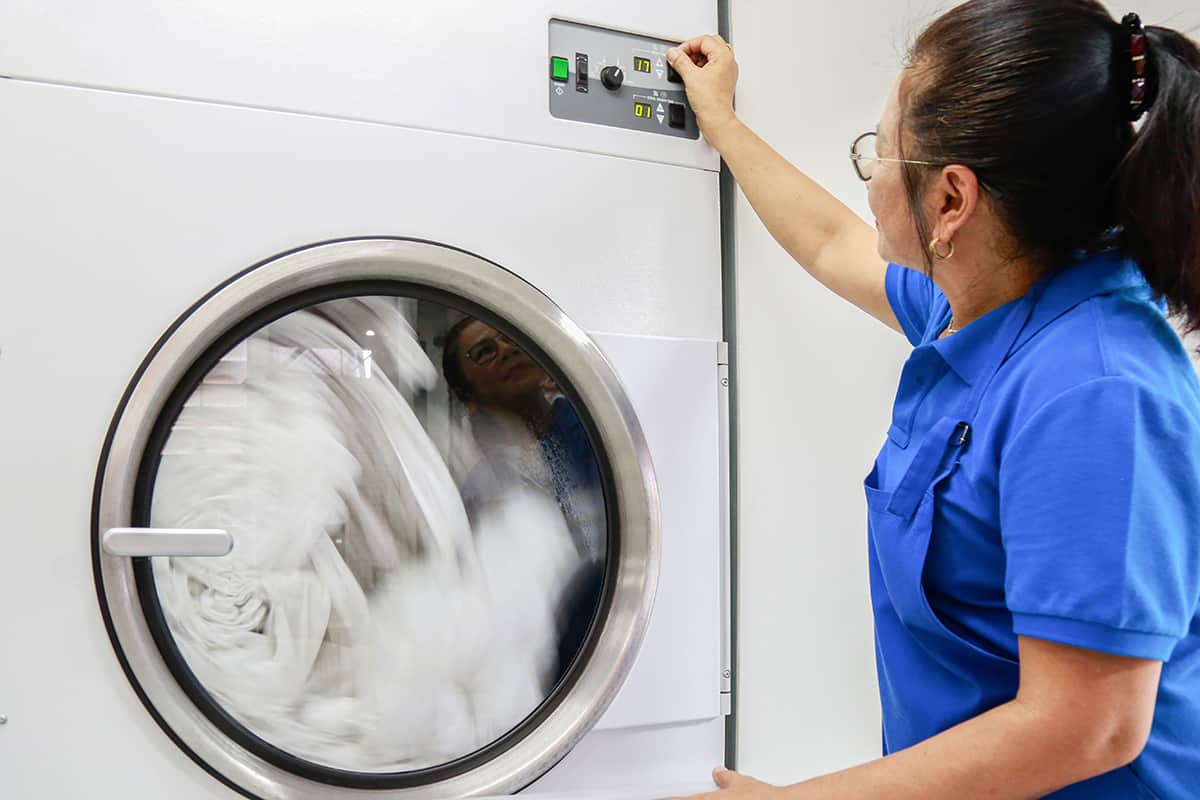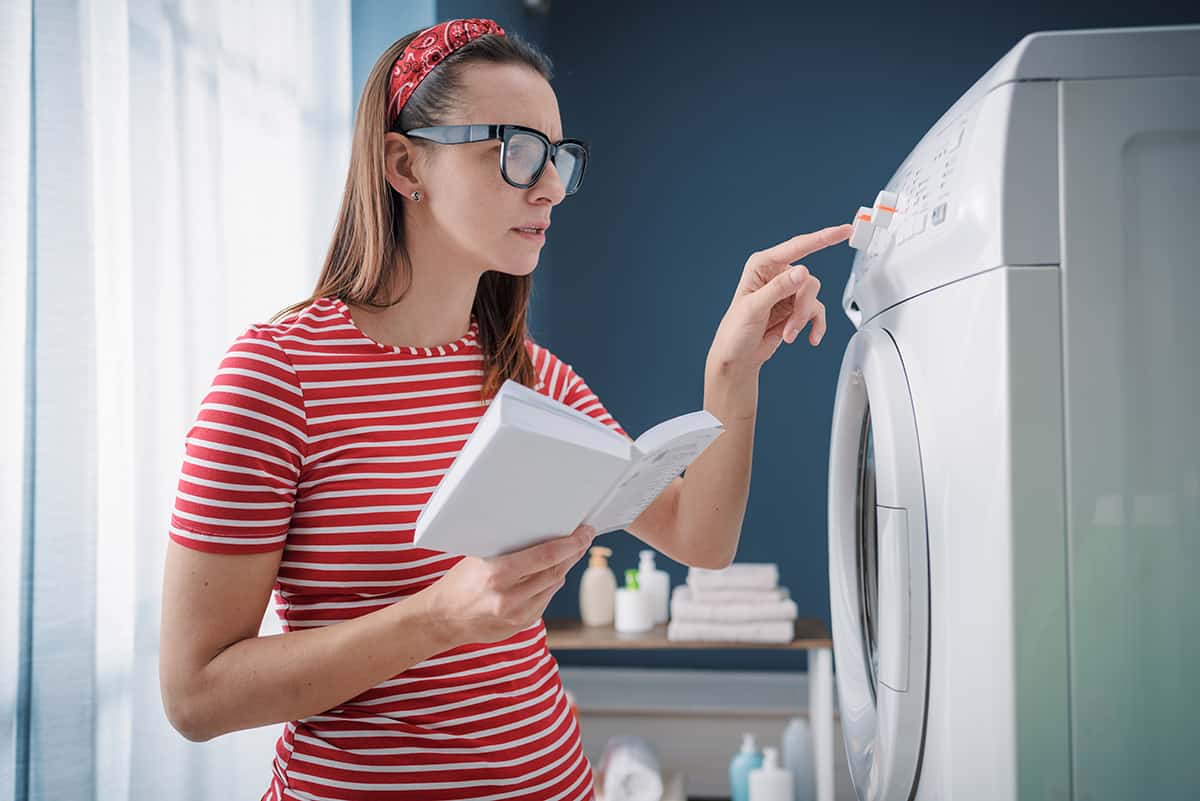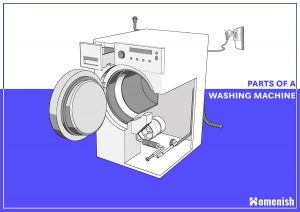The drum, belt, and pulleys are the essential parts of a dryer. The drum is the large cylinder that turns clothes and holds them in place while they’re being heated
It’s connected to the motor by a long belt, which allows it to spin at high speeds. Pulleys (or pulley systems) control the tension on this belt and allow you to change settings like how fast or slow your dryer spins.
Other parts include filters, vents on top or back, lint traps, and seals around doors—but these are less important pieces that can usually be replaced cheaply by anyone with basic knowledge of home repair. Find all major parts of a dryer explained below illustrated with a 3D diagram.
Main Parts of a Dryer
Drum
The drum, which is also a part of a washing machine, is the large metal cylinder inside the dryer. The drive belt, which powers the drum, is driven by a motor. When you turn on your dryer, the motor starts to spin the wheel that’s connected to it.
This makes all of those components work together in order for your clothes to get dried properly!
Drive belt
The drive belt is a rubber belt that turns the dryer drum. If this belt breaks or slips off, the drum will not turn, and there’s no way for air to get into and around your clothes. Replacing this part requires opening up your dryer to get at it, so it’s one of the more difficult repairs you can make yourself.
The best way to avoid a broken drive belt is by checking yours regularly and replacing it before it starts showing signs of wear–which includes checking if its tension has increased or decreased due to normal use over time.
Thermostat
The thermostat is a device that controls the temperature of the dryer. If you have a gas dryer, it’s usually located inside your gas valve. On electric models, it’s part of an electronic control board and can be easily tested with an inexpensive multimeter.
If your dryer is not heating, you’ll want to test this first before proceeding further down your diagnosis checklist. This will save you from spending money on parts that aren’t needed yet or performing work that won’t fix the problem because it hasn’t been diagnosed correctly by someone else (such as yourself).
Idler pulley
The idler pulley is a wheel that’s connected to the drum motor shaft and turns in synchronization with the drum. It has a grooved rim, and it’s on this rim that you’ll find the belt. The belt rides on these grooves, which helps to rotate the drum. The idler pulley keeps tension on the belt, so it doesn’t slip or break during use.
Thermal fuse
A thermal fuse is an important safety device in your dryer. It’s designed to blow if the dryer overheats, preventing fires from occurring. To test whether it’s working properly, take a multimeter and measure the resistance across each terminal of the thermal fuse (the wires leading away from it). You should see that there is no continuity there; if you don’t, then you’ll want to replace your thermal fuse with a new one.
Lint screen
The lint screen is located on the front of your dryer and catches lint, preventing it from entering your vent system. It also prevents clothing from being damaged by overheating.
Wash your lint screen after every load of laundry to keep it clean and working properly. If you have trouble cleaning it, remember that all you need is a soft-bristled brush or vacuum cleaner attachment to get into all those nooks and crannies!
If your dryer has a removable lint screen, be sure not to lose it when removing it for cleaning!
Most Common Dryer Problems
Not enough heat
The most common cause of insufficient heat is a thermal fuse. This little device protects the dryer from overheating and shutting down when it senses that the heating element has been short-circuited, which happens when fabric becomes stuck on a clogged lint screen or trapped in ducting causing too much airflow resistance.
If you see smoke coming from your dryer vent and smell an electrical fire, this is probably what happened.
If your dryer isn’t heating at all, try turning up its thermostat setting and running another load through it—you may be able to coax some heat out of your machine by doing so. If this doesn’t work, turn off power at the circuit breaker box and check for loose wires behind your appliance before trying anything else dangerous (like checking voltage with a meter).
Too much heat
If your clothes are burning or you can smell them burning, there are several things that could be causing this problem. It’s possible the thermostat is bad, the gas valve coils are bad, the high-limit thermostat is bad, or the thermal fuse may be bad.
If your dryer is getting too hot, don’t worry; it’s actually supposed to get hot while using it! If it doesn’t seem to be heating up at all, then check if there’s an igniter or burner element that needs replacing as well.
Doesn’t tumble, doesn’t start (or stops)
Check the circuit breaker and/or fuse box. Check the door switch by removing it from its mounting bracket, cleaning it thoroughly, and reapplying new lubricant. Check the start switch by removing it from its mounting bracket, cleaning it thoroughly, and reapplying new lubricant.
Check the drive motor by removing it from its mounting bracket, cleaning it thoroughly, and re-installing a new belt on both ends of the drive shaft (one end is behind a cover that you will have to remove). Make sure all wires are connected properly at both ends before replacing any components into their original positions.
If none of these steps solve your problem:
Check for obstructions in or around the lint filter area; remove any found obstructions if necessary. Inspect exhaust ducting for clogs; clear them with a vacuum cleaner if necessary.
Check exhaust hoses for proper routing through the dryer base frame; make sure there are no kinks or other bends in exhaust hoses that could restrict airflow (this may require removal from the wall).
Inspect evaporator fins at the rear of the dryer cabinet; clean them if necessary using canned air or a brush-like tool designed specifically for this purpose (do not use excessive force while cleaning evaporator fins because they can easily break off).
Not enough or too much drying time
If your dryer takes too long to dry clothes or if it does not dry them at all, you may have a problem with the timer. The first thing to check is if the lint filter is clogged or if the vent is blocked.
If this is not the case, check if the dryer is level and also check if there are any issues with its thermostat settings and heating elements.
